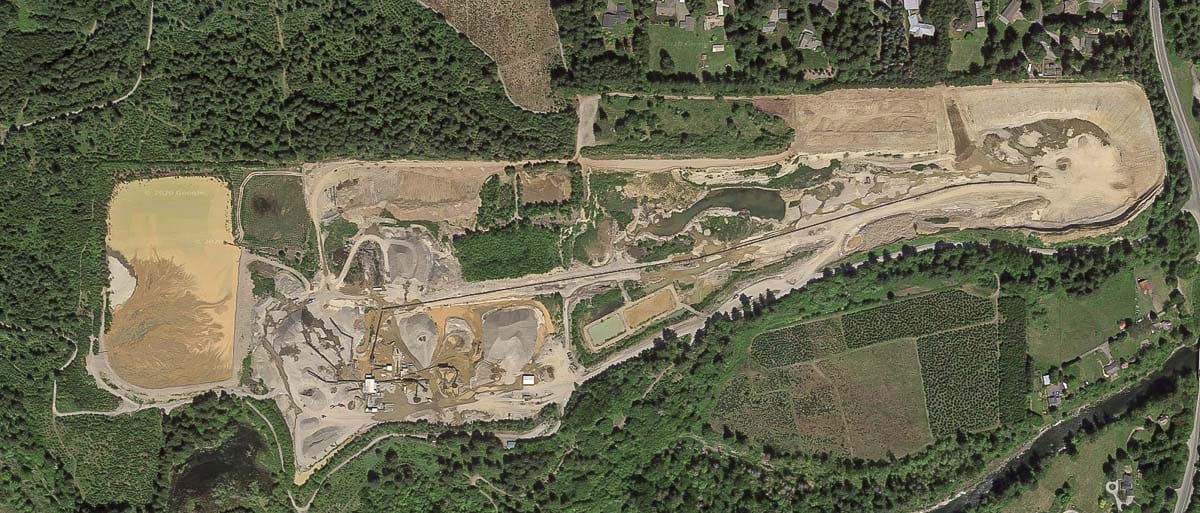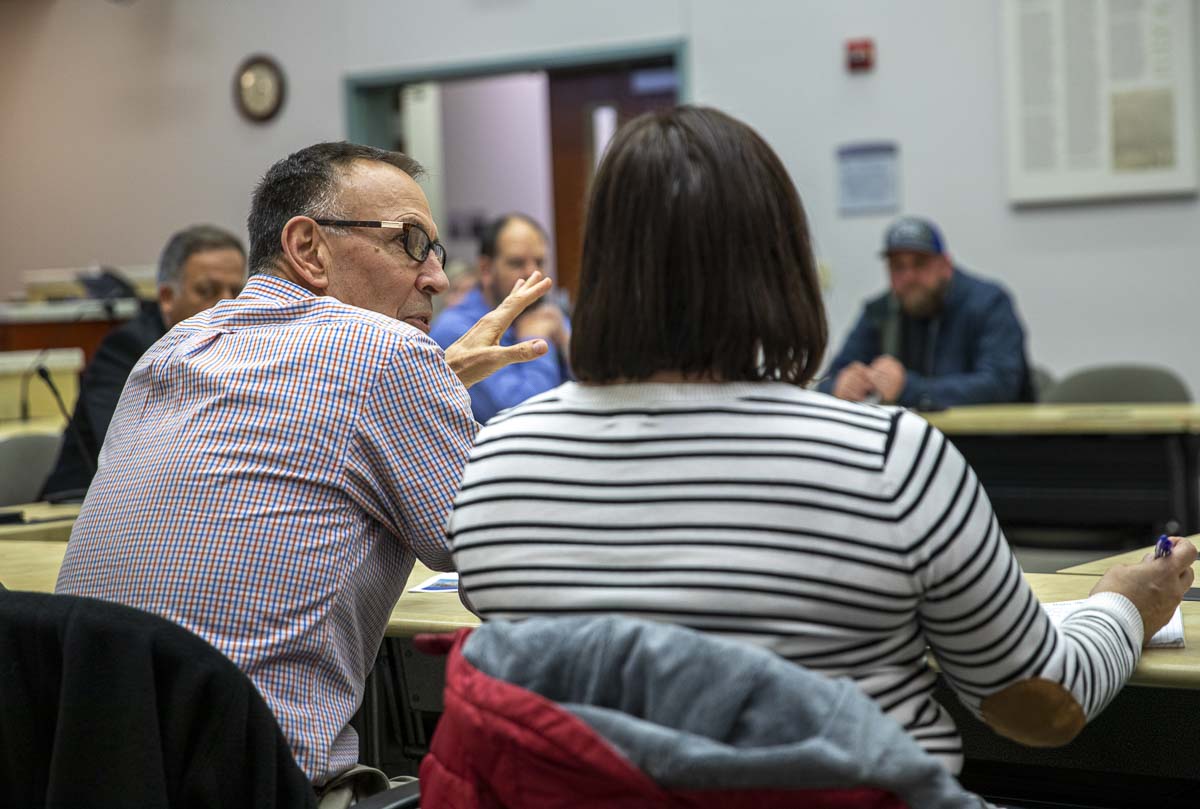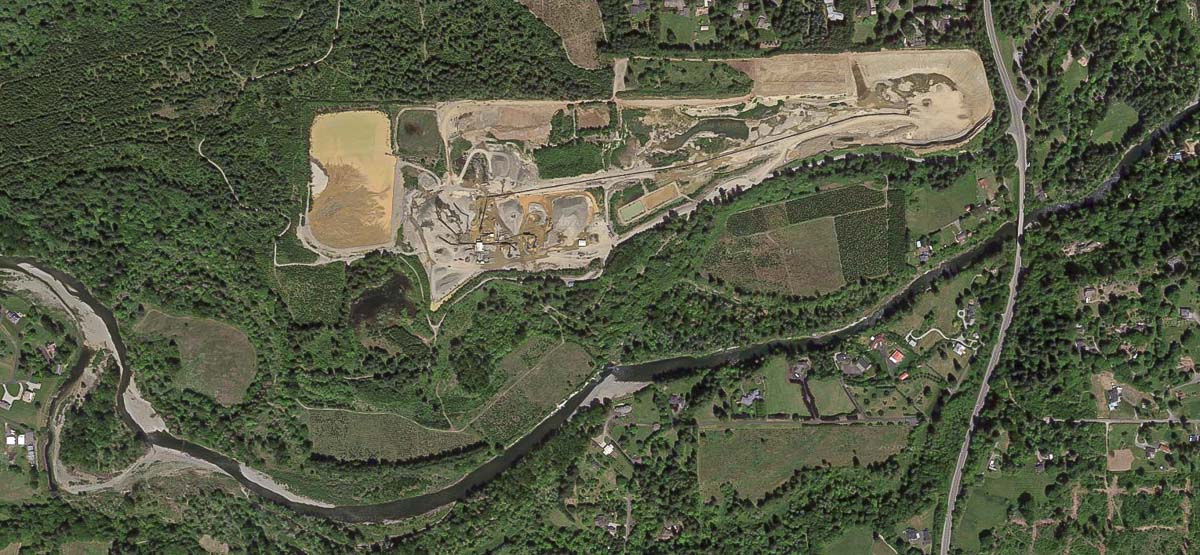Federal Mine Safety and Health Administration felt earthen dam was a potential hazard
BATTLE GROUND — The Lewisville gravel pit in Battle Ground, currently mined by Cadman, Inc., ceased operations earlier this month, after the federal Mine Safety and Health Administration (MSHA) felt an earthen dam was unstable, according to the Washington state Department of Ecology (DOE).

At times in partnership with MSHA, the DOE maintains the environmental safety of more than 500 dams and dikes in Washington state, said Jeff Zenk, a spokesperson from the Southwest Washington DOE office.
The Cadman pit, which had just begun the application process for an expansion in February, was inspected by MSHA that same month. The visit looked at an impoundment area in the form of a retaining dike or dam which maintains a holding pond of water and sediment on the mine site.
According to Zenk, MSHA felt the dam was unstable and lacked the required strength to prevent a collapse, which could cause the contents of the holding pond to surge into the Lewis River, located just over 500 yards from the site.
Cadman issued a statement that reads as follows:
“Cadman Materials, Inc. acknowledges that its Lewisville mining site has been temporarily closed as a result of structural concerns identified with an impoundment area during a recent inspection by MSHA. Cadman is committed to operating in a safe and responsible manner and is working collaboratively with MSHA and the Washington State DOE to develop and implement a solution so the site can safely resume operations in the near future.”
DOE itself does not have stop-work authority, Zenk said, but MSHA does. Boring is slated to take place on the dam to discover potential weaknesses and how to remedy them, according to Zenk.
“The mine is closed due to issues with their impoundment. MSHA is working with the operator and their consultants in developing a plan to correct the issues,” said a U.S. Department of Labor spokesperson, in an email statement.
Last month, the Washington Department of Natural Resources (DNR) also issued a notice to the mine that the holding pond, which the dam in question is a part, needed to be updated with regards to reclamation. This was because the amount of sediment in that pond has exceeded the originally approved amount, according to Joe Smillie, a spokesperson for DNR.
Cadman, a sand and gravel company owned by Lehigh Hanson and a member of the Heidelberg Cement Group, had explained its plan to apply for expansion of its existing operation at the Lewisville pit along WA-503 at a Clark County Surface Mining Advisory Committee (SMAC) meeting earlier this year.
Mine operator, Chuck Rose and his associate Christy McDonough, gave the expansion plans presentation during the previous meeting, at which time the impoundment issue hadn’t been found yet.

At that meeting, many members of the community opposed to other mining enterprises in Clark County expressed support for the Cadman operation, which supplies large amounts of gravel to Clark County’s Public Works Department.
Representatives of the East Fork Community Coalition (EFCC) and Friends of the East Fork, both community groups that help maintain the safety of the Lewis River, also attended that meeting. In the past, they have supported Cadman, and written formal statements to Clark County Code Enforcement to voice support.
Dick Leeuuwenburg, a representative of EFCC, said they are pleased someone saw something and took action on the issue. The groups have also brought up issues regarding Yacolt Mountain Quarry and Livingston Mountain Quarry with Clark County over the past several years.

The operator of those pits, JL Storedahl and Sons, has been the main subject of the group’s criticism as of late. In response to the Cadman closure, Storedahl said that for them the situation is not about Cadman, but more about the groups’ response.
“For 15 years, Friends of the East Fork has inspected the Cadman site, and they did not detect this issue, but they have accused us of many unproven issues,’’ Storedahl said.
Clark County Code Enforcement and Public Works were not involved in the closure of the Cadman pit. Public Works is currently only responsible for Livingston Mountain Quarry in east Clark County.
There is no evidence or information that the COVID-19 pandemic played any part in the closure of the mine.
Also read:
SMAC meeting includes comments from Cadman, Inc. officials on Lewisville mine; Yacolt and Livingston Mountain operations answer questions





